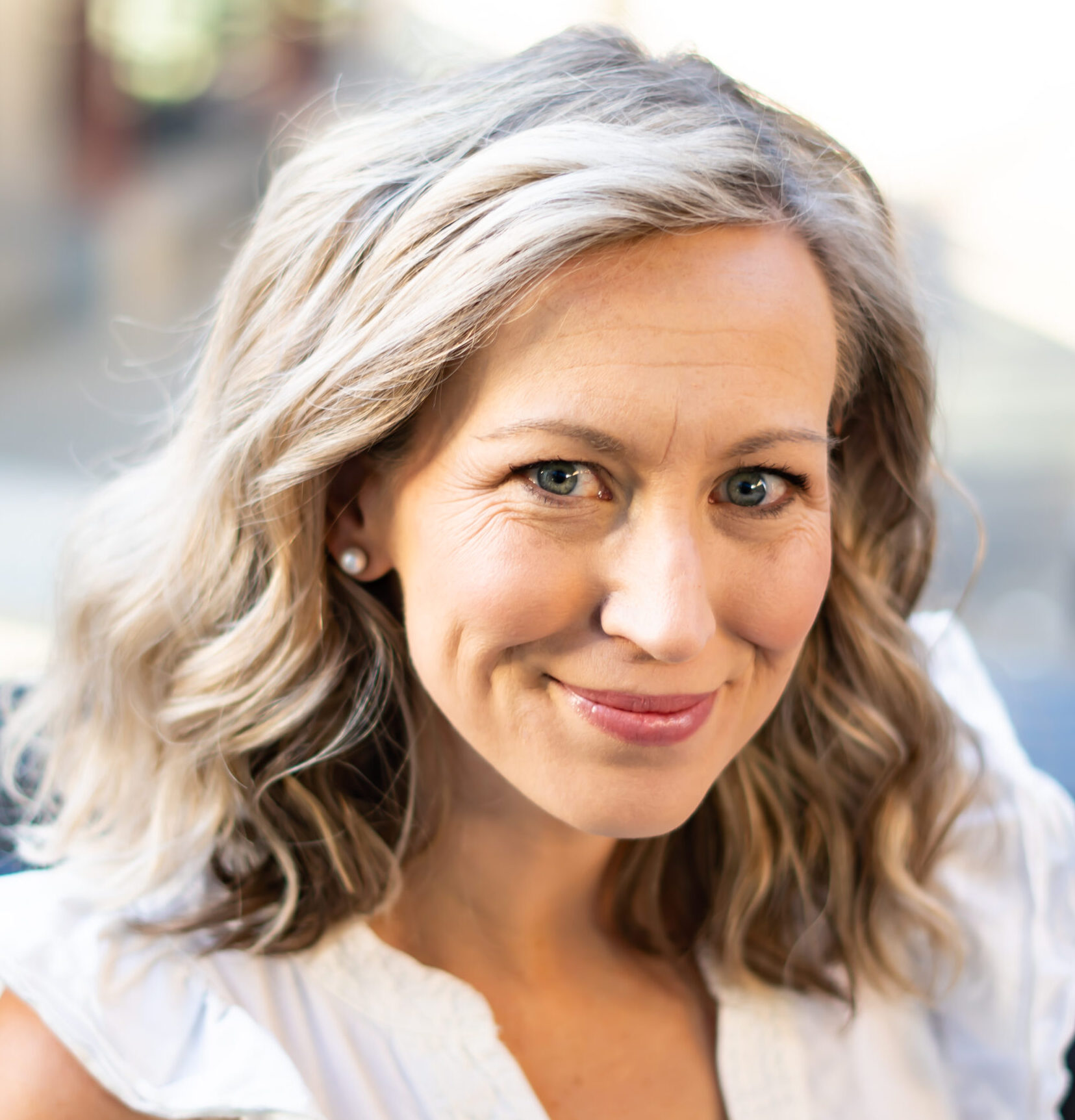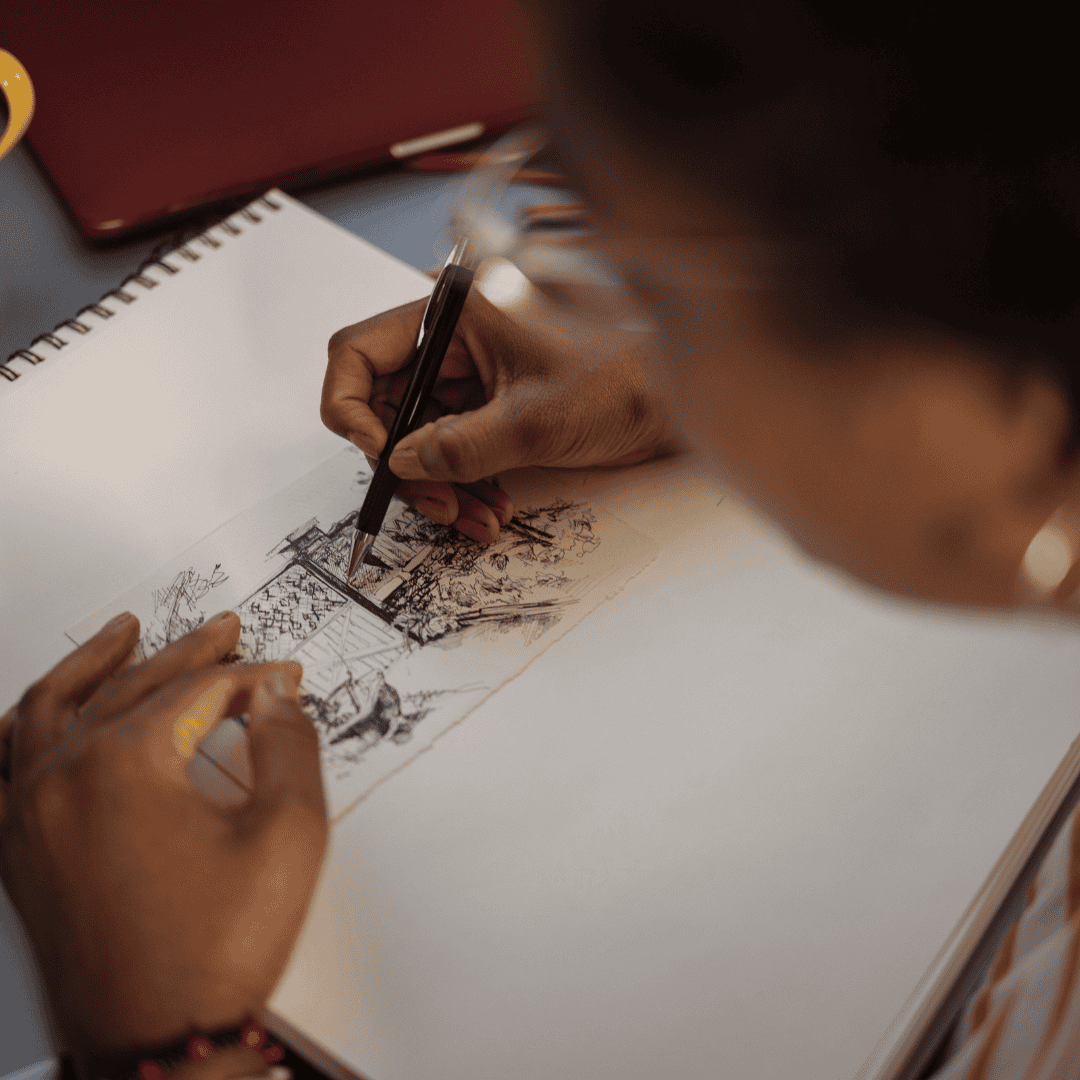How Creativity Can Fuel Self-Care and Sanity as a Mom

By Megan Davis, LCSW, PMH-C
When was the last time you allowed yourself to let loose, imagined new possibilities, or put something out into the world that felt authentically you?
If you were to imagine yourself back in that moment, where are you? What sights, sounds, tastes, sensations, and smells are you experiencing? What are you doing and how does it feel in your body?
As a child, I was immersed in frequent opportunities for creativity since my mother was an artist, gardener, and former art teacher. This is something I took for granted and would engage in from time to time, but it wasn’t until the Covid-19 Pandemic that I became more intentional about incorporating opportunities for creativity into my daily life.
As a mental health therapist and mother of two young children, I felt completely overwhelmed and exhausted trying to navigate seeing clients during lockdown, pivoting to virtual learning with a kindergartener and preschooler, and trying to create a sense of routine and groundedness when our worlds were in upheaval.
One of the silver linings of the pandemic was the extra time I wasn’t spending running errands, attending various events, taking my kids to activities. It was here that I slowly started to sprinkle intentional creative time back into my life and I’m so glad I did!
I started small by coloring with my kids, then finding little crafts we could create, and eventually I started experimenting with other forms of creative expression such as watercolors, embroidery, and floral design that I could do alone while my kids were in bed. The more I engaged in the creative process the more present, fulfilled, revitalized, and excited I felt.
Over the past few years I have loved continuing to find ways to cultivate opportunities for creativity as well as sharing what I’ve learned anecdotally through my own experience and emerging research about the connection between creative expression and emotional wellness.
What is Creativity?
Creativity is thought of as an original, innovative way to produce something or solve a problem through the use of our imagination. The interesting thing, however, is that it doesn’t have to be completely original. Take paint-by-number, for instance, whatever you’re painting isn’t something you completely developed on your own, yet it doesn’t really matter.
When we engage in the creative process, we are often also engaging with what we are doing in a mindful way through observing, describing, detaching, offering self-compassion, and acting with intention.
- Megan Davis
The Link Between Creativity, Mindfulness, and Stress Management
When we engage in the creative process, we are often also engaging with what we are doing in a mindful way through observing, describing, detaching, offering self-compassion, and acting with intention. If you are working on an intricate detail while painting or trying to write a poem, it’s pretty difficult to ruminate or solve other problems.
Intentionally engaging in creativity and mindfulness can help regulate our nervous system responses and complete the stress cycle, a term coined by sisters Dr. Emily Nagoski and Dr. Amelia Nagoski in their book, Burnout: The Secret to Unlocking the Stress Cycle. When we don’t complete the stress cycle, we stay in a heightened state of stress and arousal which can have negative affects on our emotional and physical health.
The Struggle is Real
For many of us, it’s been a while since we did something creative. As mothers, it’s so easy to be caught in a routine of busyness and moving our own needs to the bottom of the to-do list. Finding the time and energy to get just the basics done can feel like a monumental task. We also might get hooked by thoughts such as “I’m not creative” or “It’s going to look like a piece of junk”. Time to be creative can feel like a luxury we don’t have or maybe even selfish and excessive when we’re focused on meeting the needs of others who depend on us.
While most of us can probably relate to one of the struggles listed, research shows that creativity often leads to a positive emotional experience. Yes, there can be difficult emotions or critical self-talk, yet creativity offers opportunities for mastery, accomplishment, joy, self-compassion, and connection. Creativity also has reciprocating effects on emotional wellness – the more we feel emotionally regulated and well, the more likely we are to engage in the creative process and vice versa (Tan et al., 2021).

Tips for Cultivating Creativity
1. Start small. When we’re trying something new, our minds have a tendency to overestimate the time and energy we will need for them. Taking a few minutes to doodle, rearrange a small space in your home, or edit pictures can spark creativity.
2. Let go of expectations and perfectionism. This can be very difficult and is what often prevents people from engaging creatively in the first place. Focus on the process instead of the outcome and remember – creativity isn’t about being “good” at something.
3. Make it a ritual. Whether it’s setting aside intentional time daily or signing up for weekly classes, incorporating it into your routine will help you continue to create the space you need to create.
4. Do what you’re already doing, just make it a bit EXTRA. Try a new recipe and plate it in an artistic way. Tired of singing the same songs to your kids? Make a re-mix. Sending a birthday card to a friend? Look up a handlettering tutorial to try.
5. Model creativity for your kids. Creativity can serve as an effective form of self-care and self-expression which only enhance coping skills and resiliency. When your kids see you taking time for creative self-care and expression, they’ll be more likely to do this as well.
Mothers are the core of our families and communities. Because of this, our own emotional and physical wellness have far-reaching effects. How would you like to incorporate creativity into your life? Here are a few ideas to get you started:
Ways to Incorporate Creativity into Your Life:
- Doodle, color, or write a few words of gratitude in a journal using a variety of colors.
- Rearrange a small space in your house.
- Create a mood-boosting play list and have a dance party.
- Write out your to-do list in various handwriting styles.
- Take a few pictures and play around with editing and filters.
- Arrange some store-bought flowers for your home.
- Try a paint-by-number kit.
- Learn origami.
- Try a new recipe, plate it in an artistic way.
- Start a DIY project – refinish a piece of furniture or make your own bath salts.
- Play an instrument or take lessons.
- Write poems, songs or stories.
- Take an introductory workshop on floral design or creating a terrarium.
- Plan and plant a garden.
- Learn a new hobby or craft such as knitting, painting, or jewelry making.
- Start a blog or curated Instagram account.
Sources:
Nagoski, E., & Nagoski, A. (2019). Burnout: The secret to unlocking the stress cycle. Ballantine Books.
Tan, C. Y., Chuah, C. Q., Lee, S. T., & Tan, C. S. (2021). Being Creative Makes You Happier: The Positive Effect of Creativity on Subjective Well-Being. International journal of environmental research and public health, 18(14), 7244. https://doi.org/10.3390/ijerph18147244
Megan Davis, LCSW, PMH-C is a mental health therapist and mother of two who loves working with mothers across the lifespan, from preconception through perimenopause. She has a private practice and specializes in maternal mental health and those experiencing perinatal OCD and anxiety. Megan offers virtual psychotherapy to clients located across NC, SC, and VA. She is now offering therapy intensives focused on Exposure and Response Prevention (ERP) for OCD and perinatal mental health support and planning for women who are ready to get a jumpstart in therapy. She also provides seasonal in-person workshops incorporating creativity, connection, and self-care through floral design.
For more information on Megan’s training, therapeutic approach, and services, visit: www.megandavispsychotherapy.com.
You can also follow her on Instagram @megandavispsychotherapy.
Spread the word
Medical Disclaimer: All content found on the HER Health Collective Website was created for informational purposes only and are the opinions of the HER Health Collective experts and professional contributors. The Content is not intended to be a substitute for professional medical advice, diagnosis, or treatment. Always seek the advice of your physician or other qualified health providers with any questions you may have regarding a medical condition. Never disregard professional medical advice or delay in seeking it because of something you have read on this Website. If you think you may have a medical emergency, call your doctor, go to the emergency department, or call 911 immediately.

